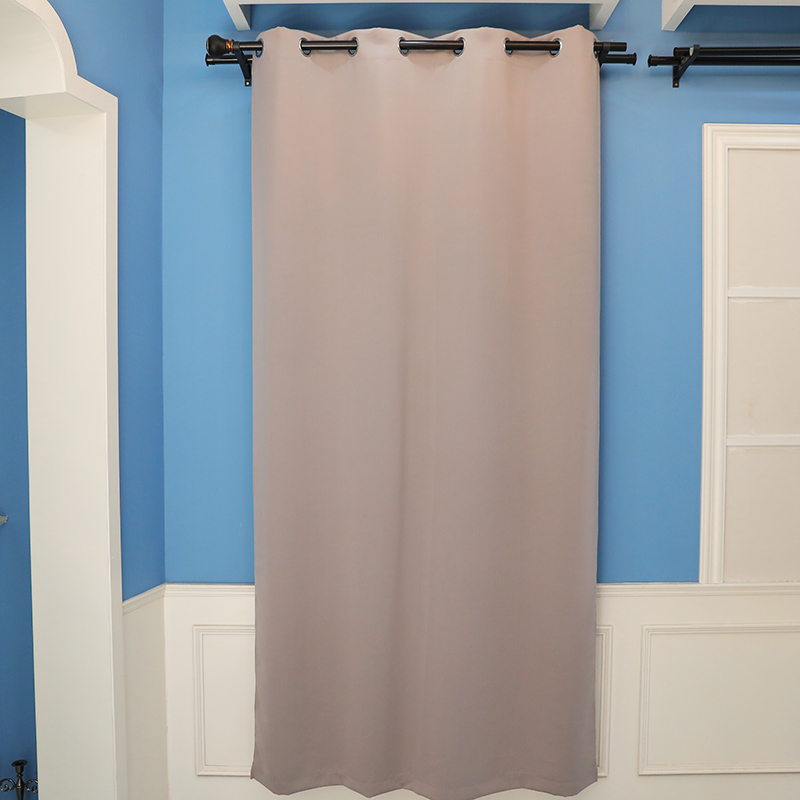How effective are simple plain blockout curtains in blocking out light?
Posted by Admin
Simple plain blockout curtains are designed to be highly effective in blocking out light. The level of effectiveness largely depends on the quality of the curtain material and its construction. Here are key factors contributing to their light-blocking capabilities:
1.Fabric Material:
Microfiber Technology: The fabric composition of simple plain blockout curtains often incorporates advanced microfiber technology. This technology involves weaving exceptionally fine fibers together, resulting in a fabric with an intricate structure that maximizes light-blocking capabilities.
Opacity Enhancement: Manufacturers may employ proprietary techniques to enhance the opacity of the fabric, ensuring that even in direct sunlight or bright artificial light, the curtains maintain their effectiveness in blocking out light.
Color Influence: The color of the fabric itself can impact its light-blocking properties. Darker colors, such as deep blues or charcoal grays, tend to absorb more light, contributing to a higher level of darkness in the room.
2.Lining:
Thermal Layering: The multilayered linings in blockout curtains are not only geared towards light-blocking but also incorporate thermal properties. These layers may include insulating materials that help regulate room temperature, creating a comfortable environment in addition to blocking light.
Sound Dampening: In some cases, the linings are designed to serve a dual purpose by providing sound dampening qualities. This additional feature contributes to creating a serene and private space, especially beneficial in bedrooms or media rooms.
3.Blackout Technology:
Nano-Coating Innovation: Cutting-edge blackout technologies might involve nano-coating applications. Nano-coatings create a microscopic barrier on the fabric surface, enhancing its light-blocking capabilities without compromising the overall texture or feel of the curtains.
Smart Material Integration: Advancements in smart materials allow for the integration of light-sensitive elements. These elements can automatically adjust the curtains based on the ambient light conditions, ensuring optimal light blocking throughout the day.
4.Seams and Design:
Light-Blocking Seams: Beyond precision stitching, the seams in blockout curtains may incorporate light-blocking technologies themselves. Specialized seam tapes or seals help eliminate any potential points of light penetration, creating a seamless barrier when the curtains are closed.
Artistic Concealment: Design elements, such as pattern placements or decorative elements, may also serve a functional purpose. Clever design choices can strategically conceal seams and enhance the overall light-blocking effectiveness while adding an aesthetic dimension to the curtains.
5.Coverage:
Customized Solutions: The quest for complete darkness is met with customization options. Manufacturers offer bespoke solutions where customers can specify not just the dimensions but also the degree of coverage required, ensuring a tailored fit for each window.
Innovative Mounting Systems: Some blockout curtains come with innovative mounting systems that further reduce gaps. Magnetic closures, for instance, provide a secure connection between curtain panels, minimizing the chances of light seepage.
6.Room Setup:
Light-Absorbing Surfaces: The overall room setup extends beyond curtains. Consideration for the color palette of walls and furnishings plays a role. Opting for darker shades can create an environment where light is absorbed rather than reflected, enhancing the overall darkness achieved by the curtains.
Smart Lighting Integration: Integrating smart lighting solutions allows users to control the internal lighting environment effortlessly. Synchronized with blockout curtains, these systems contribute to creating a seamlessly darkened atmosphere.
7.Light Sources:
Dynamic External Light Management: Addressing external light sources dynamically involves the use of smart sensors. These sensors can detect changes in external light conditions and prompt the curtains to adjust automatically, ensuring a consistently dark interior.
Architectural Considerations: In architecturally challenging environments with unique window placements, architectural adjustments may be recommended. Solutions such as light-shielding panels or window treatments integrated into the architecture can complement the light-blocking efforts of the curtains.
Simple plain blockout curtain for home and office

Simple plain blockout curtain for home and office

One-stop Solutions for All Industries


 English
English Español
Español













